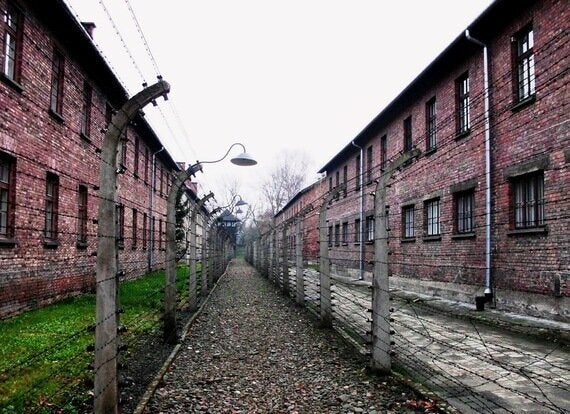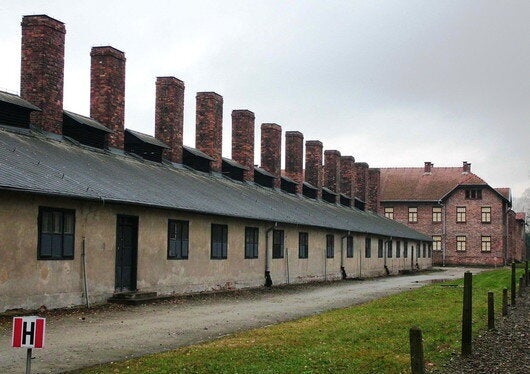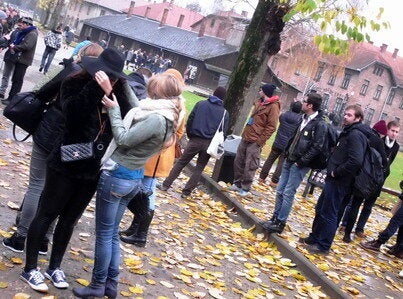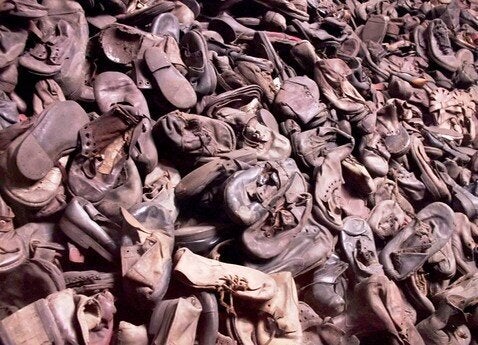
"The martyrs of Majdanek and Oswięcim...will arise from flames bringing with them the acrid smoke and deathly odour of scorched and martyred Europe"
- The Intense Humming Of Evil, Manic Street Preachers (1994)
This unattributed Nuremberg Trials quote was one of many dark lines from the Manics' darkest album 'The Holy Bible', in a song inspired by the band's visits to former WWII concentration camps.
As a teenager I listened to the album a lot though never quite related to this track and its message of the 'sounds' of evil, from industrial clanging to "screaming souls" - all seemed a bit heavy-handed even by the Manics' standards.
It was only when I went to Poland for the first time last year that I finally, unwittingly, visited the 'Oswięcim' mentioned in that quote - the Polish town which the Nazis renamed Auschwitz and where they built their biggest death camp complex, Auschwitz-Birkenau, responsible for the murder of at least one million people, 90% of them Jews.
Today, the 70th anniversary of its liberation, is a better day than most to recount that experience.
After reading and watching so much about it over the years it doesn't feel real until you're physically there, amid the bleak smokestacks and barbed-wire fences sprawled over hundreds of acres of barren land. Despite summer being a popular time to visit, when the surrounding fields might approach picturesqueness, it felt more fitting to visit when winter was closing in.

This unsettlingly evoked though what some have called 'misery tourism', like it's some kind of evil theme park. One broadsheet columnist the previous year had denounced its being included on stag-do tours, in which bunches of Brits swing by the camp after a morning's quad-biking, before getting back on the lash.
I have to admit at this point that I and my partner were in the depths of a bad hangover when we arrived, having bumped into two Scots and an Irishman also in Krakow for the weekend in a subterranean bar the night before, where we ended up doing what travelling Brits and Celts do in these parts until 2am kick-out.
So when we trudged up to the "Arbeit Macht Frei" gate that morning after minimal sleep the mood was even grimmer, with heightened surreal detachment. And indeed there was a group of young lads in our English-speaking tour group, but none of the irreverent antics you'd be led to expect. For me, if a stag tour wants to swerve by Auschwitz that's surely a good thing, as it's the kind of sobering face-slap as many as possible should receive no matter what their reasons for being in this part of Poland.
While most visitors were respectful throughout there were some low-level questionable behaviours on display beyond inappropriate selfies and smile-pose photos, like fashionista try-hards making sure their hat and accessories are perfectly placed even at death camps.

Also groups of Jewish lads wearing Israel flags like Superman capes: arguably they've earned the right to wear what they like if their forebears died here, but Super-Jew garb is close to the wind.
Lastly, visitors merrily scoffing their packed lunches amid holocaust crematoria, unable to hold off until the bus back. Call me pious but I fasted the whole day; even if I had a sandwich I wouldn't have felt like eating there. That's when it almost becomes a theme park ("Enough gloom for now, lunchtime!")
A prominent holocaust scholar once called for the site to be closed or pulled down, describing it: "The ultimate nihilistic place (where) a million people literally disappeared. Shouldn't we confront people with the nothingness of the place? Don't give people a sense that they can imitate the experience."
By the end of the visit though I couldn't disagree more. It's a life-changing experience because it makes history concrete: physical evidence in front of you where before there were only images on a page or screen.
What hit hardest for me wasn't the gas chambers or burial grounds or the cell where they first tested Zyklon-B on POWs, it was the huge piles of harvested human bi-products - shoes, spectacles, artificial limbs - all meticulously removed, gathered, separated and catalogued like in a wholesale market. And about a tonne of hair, plus the recycling-gone-crazy fabrics woven from it.

In one room I had an instant flashback of the railway station scene in Schindler's List where the expelled Jews are told to leave their luggage on the platform as it will follow separately, before it's all immediately taken into a station building and emptied of all possessions. Here were hundreds of such suitcases stacked floor-to-ceiling 70 years on, still legibly chalked with their owners' names by their own hands.
Knowing you're seeing only a fraction of the contents of 30 warehouses blown up by the fleeing Nazis, that's when it all hits home: the mechanicality of the killing machine on an industrial scale. That's when you could almost hear the evil hum the Manics wrote about.
It would hardly be the same to see just empty fields. Some things need to remain to be seen and remembered, especially because the last living survivors will soon die, and it shouldn't matter if you're there as part of a stag weekend to see them. However I'd still always go in the colder months - call me a misery tourist but summeriness would just seem wrong, for the same reason you don't dress colourfully for funerals.
Also, save the picnics for after you leave.
Words and photos by Kris Griffiths
